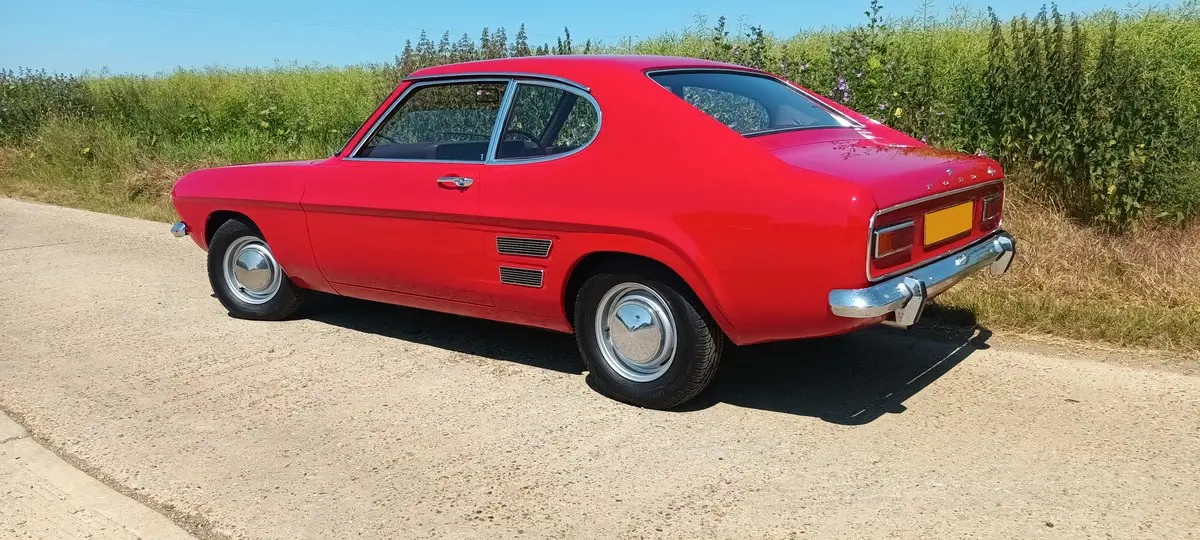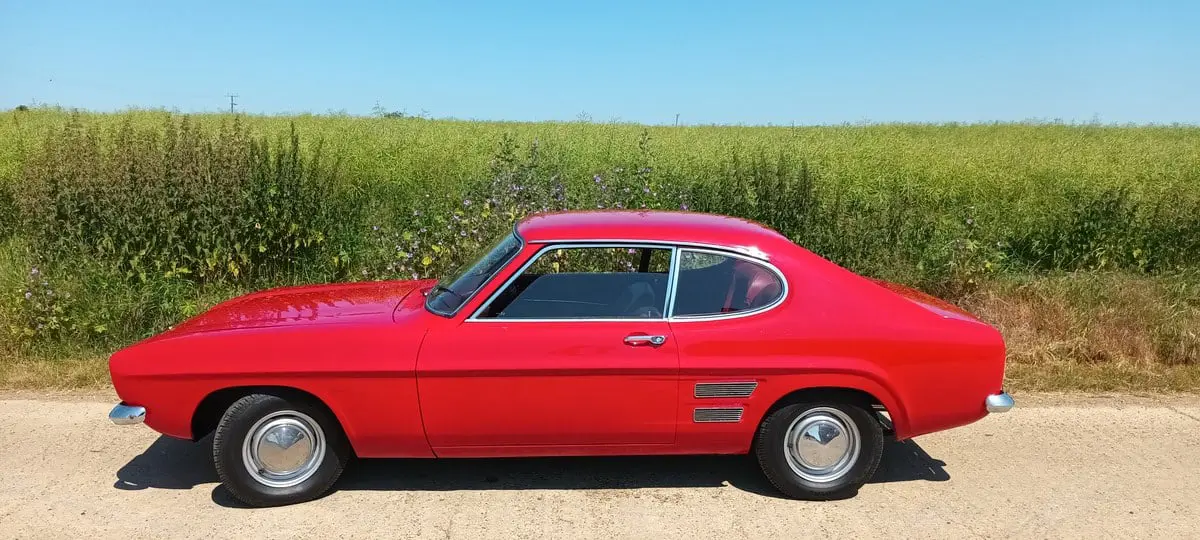NEW CAPRI VERSUS OLD CAPRI
19 September 2024
The recent announcement of the new Capri has inevitably caused some controversy, especially with owners of the 1969-1974 Ford of the same name. Allan Michael Jones, the owner of the splendid Capri Special Mk.1 we featured a few years ago, has this to say:
I am in a number of Ford Facebook groups, and it is fair to say that of all the hundreds of comments I have read I would say that 100% of Ford fans are genuinely angry that the Capri name is being used in this way. I appreciate that enthusiasts like us are hardly representative of the general public, but Ford UK are certainly annoying a lot of the dyed in the wool Ford community. I also have a 5.0GT Ford Mustang and their fans have exactly the same views about that electric vehicle with a Mustang badge stuck on it. Apparently, the only similarity is that ‘CAPRI’ is spelt the same way!

The revival of an old and very well-remembered name will inevitably cause debate. This 1300L – https://www.carandclassic.com/l/C1612170 – is a reminder of the impact the Capri Mk.1 made on the British motorist over 55 years ago – the car with “a very sporty feel to it”.
Ford began work on Project Colt (son of the Mustang) in 1964, and at the end of 1967 they rebranded it as the Capri; Mitsubishi owned that name. The running gear included a modified Cortina Mk.II suspension and the Escort’s rack and pinion steering, but “The Car You Always Promised Yourself” resembled neither – a vital element in its success. In 1971, the rival Vauxhall Firenza was too obviously related to the Viva HC saloon, which harmed its sales. Meanwhile, Ford ensured the Capri stood alone from the Escorts, Cortinas, Corsairs, Zephyrs and Zodiacs in the same showrooms.

The Capri debuted on the 5th of February 1969 to maximum fanfare. As befitting a car debuting at the tail-end of “Swinging London”, Ford GB hired 12 “Capri Girls” in Mary Quant-style wigs, berets and orange miniskirts to distribute publicity materials and host cocktail parties in a particular sales region. It was indeed another world.
That the Capri debuted in the same year as the UK release of Bullitt only enhanced its chances. Negotiating the A4055 to Reading seemed far removed from Steve McQueen’s Ford Mustang, speeding through San Francisco, but the dream was all. Ford commissioned a sales film which has to be seen to be believed, in which a middle-aged, Brylcreemed, would-be lothario finds himself irresistible to Claudia, Margot and Yvette thanks to a trio of new Capris. “Women – can’t live with them, can’t live without them,” mused Patrick Allen on voice-over duties:
Such marketing efforts now seem hilarious (or appalling). However, they did emphasise how the Capri was perfect for motorists whose aspirations exceeded their budget, with a specification to suit their needs. Ford GB claimed the “Custom Plan” would allow buyers to “tailor your car pretty much to your own particular requirements”, and, in terms of engines, there was a choice of 1.3- and 1.6-litre, four-cylinder units in standard form or the 1.3, 1.6 or 2.0 GT.
That was not all, as Dagenham devised a variety of trim levels. The entry-level Capri 1300 cost £890 7s 10d, but another £15 0s 4d gained you the L-pack, with “exhaust trim, locking fuel cap, wheel trims, body side mouldings, dummy air scoops and overrides on the front and rear bumpers”. For yet more luxury, there was the £32 12s 10d X-pack with reclining front seats, reversing lights, a folding armrest on the back seat and a dipping rear-view mirror.

The X-pack was usually ordered with the L-pack to create the Capri XL. Finally, there were the R (for “Rallye”) trim packs, available only with the GT engines and for the would-be Jason King; indeed, a Capri 1600 GT XLR guest-starred on Department S. For £39 3s 4d, you gained fog and spot lamps, a map-reading light, a leather steering wheel rim, a matt black bonnet and – of course – “Ro-Style” wheels. A 2000 GT XLR might have set you back £1,167, but you would certainly cut a dash at the Angus Steakhouse.
As another reminder of how remote 1969 now appears, Autocar suggested: “The 1300XL would make a safe but luxurious second car for the wife and a 2000GT XLR would be for the sporty executive who needs to get places fast.” Meanwhile, the 1300L was the perfect car for a commercial traveller who dreamed of being the next Steve McQueen, but whose fleet manager favoured the practicality of Ford engineering. Not to mention their reasonable servicing costs.
When the Capri Mk.2 replaced the Mk.1, Ford had sold 1,172,900 units, and this 1600L is as crucial to its success as a 2000GT XLR. For under £1,000, the owner could enjoy the same style and panache. One advertisement said: “You sit low. Relaxed. Pretty much the way a Grand Prix driver sits,” even if the 1.3-litre engine was not exactly tuned to F1 standards. The Telegraph thought “the Ford Capri marks an astonishing step forward in the notion of what an ordinary mortal’s sports car may look like,” and possessed the “authentic, bounderish appeal of the true sports saloon”.
And that applies to any Capri Mk.1 of any trim level or engine size. As for its legacy, Allan finds when he takes his Special to shows:
It is a bit of a time capsule as almost everyone seems to have a memory of the Capri. Maybe they used to own one before, or their parents or grandparents had one, and the sight of a Capri nowadays seems to trigger those reactions. It’s strange as the Capri is a terrible car compared to today’s cars, but you can’t beat a bit of nostalgia. I used to own the identical Capri model in the 1970s as our daily driver. When I get behind the wheel, I’m 25 again – provided I don’t look in the mirror!
Will the new model evoke such reactions? Time will tell...
With thanks to: Allan Michael Jones
